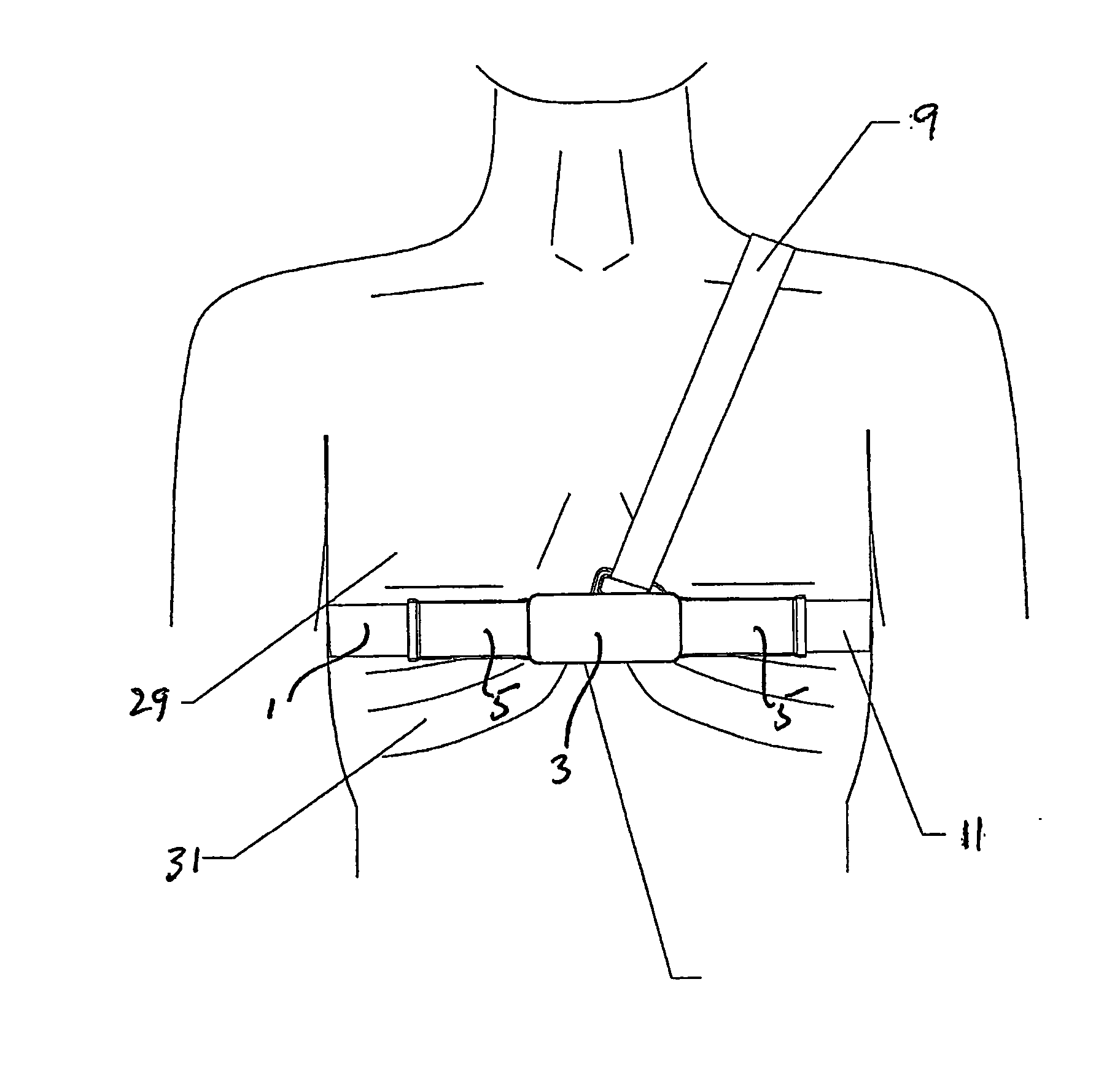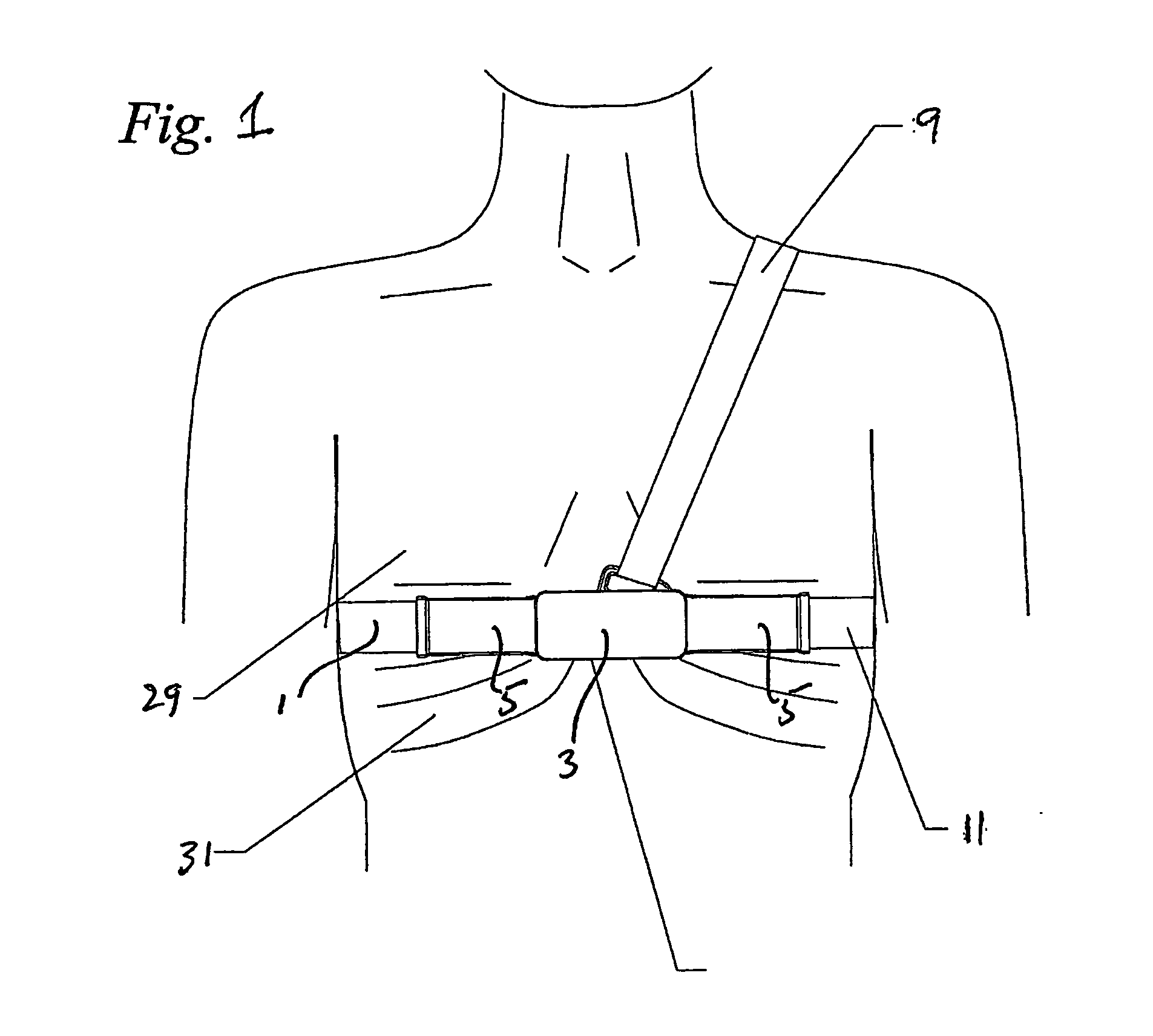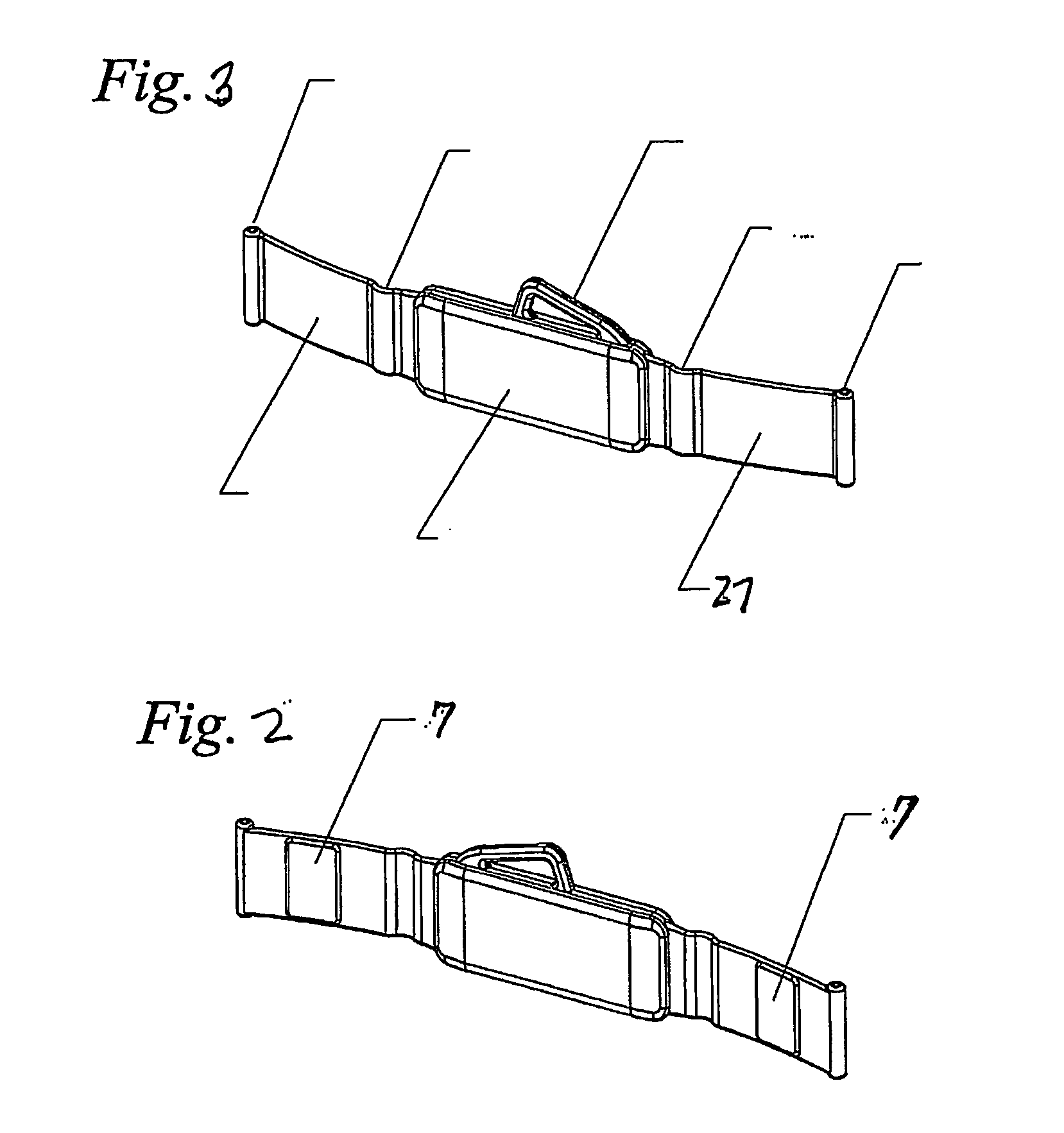Respiration Motion Detection and Health State Assesment System
a motion detection and health state technology, applied in the field of compact wearable systems, can solve the problems of no satisfactory system economical enough to provide to large numbers of armed forces, medics and other rescue personnel are killed or seriously injured, and the life of the rescuer is in danger, so as to reduce the bandwidth requirements for transmission, enhance the battery life, and save battery power
- Summary
- Abstract
- Description
- Claims
- Application Information
AI Technical Summary
Benefits of technology
Problems solved by technology
Method used
Image
Examples
Embodiment Construction
[0119] As shown in FIG. 1, the Life Signs Detection System (LSDS) is an apparatus containing a group of sensors for certain vital physical parameters of a subject person and electronics to receive and interpret electrical signals from the sensors, process the signals and transmit information on the physical status of the subject. The group of sensors and electronics is embodied in a carrier 1 arranged to be worn by the subject. The electronics residing on a PC board is designed to accomplish most signal processing at the location of the subject and to avoid the need for robust networking and centralized computing that require large amounts of bandwidth to transmit raw signals for analysis. Such large bandwidth is impractical in field settings where bandwidth is low, unreliable and localized responsiveness must be maintained.
[0120] The carrier comprises three main elements—a central housing 3, two flexible extensions 5 containing external sensors 7 (see FIG. 2), and a harness 9. FIG...
PUM
 Login to View More
Login to View More Abstract
Description
Claims
Application Information
 Login to View More
Login to View More - R&D
- Intellectual Property
- Life Sciences
- Materials
- Tech Scout
- Unparalleled Data Quality
- Higher Quality Content
- 60% Fewer Hallucinations
Browse by: Latest US Patents, China's latest patents, Technical Efficacy Thesaurus, Application Domain, Technology Topic, Popular Technical Reports.
© 2025 PatSnap. All rights reserved.Legal|Privacy policy|Modern Slavery Act Transparency Statement|Sitemap|About US| Contact US: help@patsnap.com



